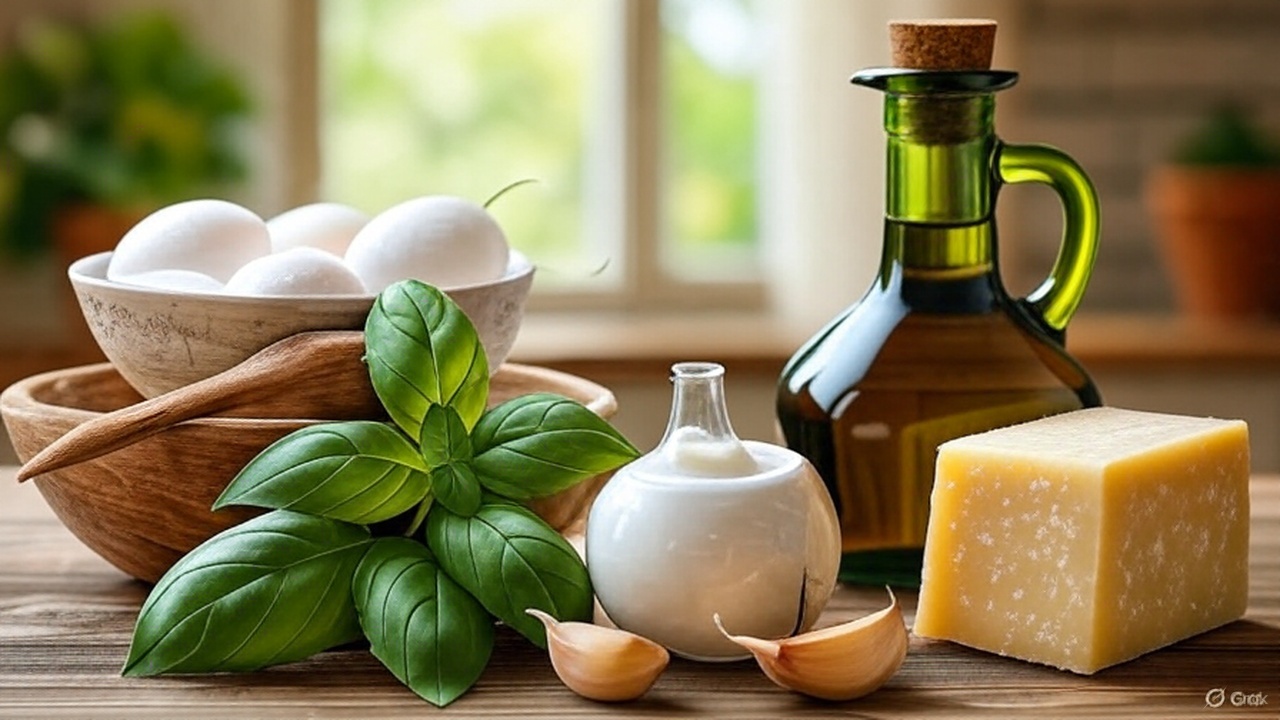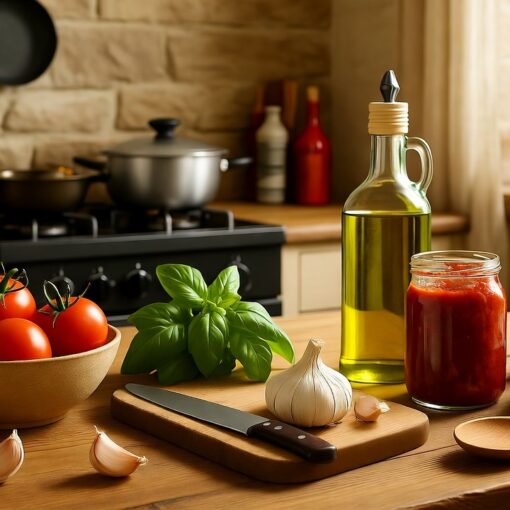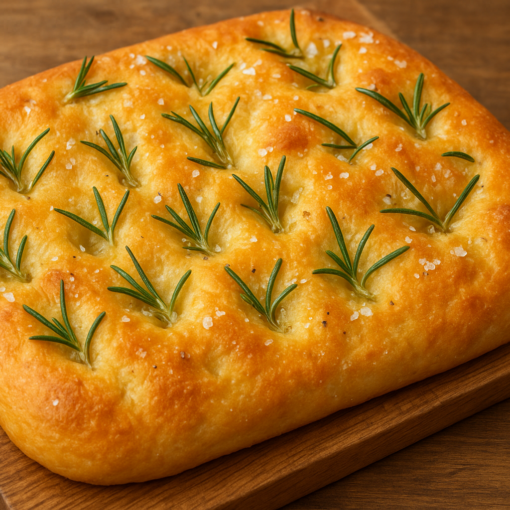A Collection of 7 Non-Tomato Pasta Sauces
From Genoa to Rome — each sauce with history, flavor, and the perfect pasta match
Italian pasta sauces shine even without tomatoes. These seven iconic sauces showcase the versatility of oil, cream, cheese, and wine — from vibrant Pesto to creamy Gorgonzola. Each includes a short origin story, a fun fact, and the ideal pasta pairing.
Seven masterpieces — pasta sauces for every craving, no tomatoes required.
Pesto Genovese
Origin: Genoa, Italy, 19th century. Created by pounding fresh basil with garlic, pine nuts, cheese, and olive oil in a mortar.
Fun Fact: “Pesto” derives from “pestare,” meaning to pound — traditionally made with a pestle and mortar for the best texture.
Ingredients
- 50 g fresh basil leaves
- 50 g pine nuts
- 2 garlic cloves
- 50 g Parmigiano-Reggiano, grated
- 50 g Pecorino, grated
- 150 ml extra virgin olive oil
- Salt
Method
Best Pasta: Trofie or Linguine — shapes that hold the chunky, herbaceous sauce.
Pro Tip: Avoid heating pesto; toss with hot pasta off the heat to preserve freshness.
Photo credit: Genoese tradition
Fettuccine Alfredo
Origin: Rome, 1914. Created by Alfredo di Lelio with butter and cheese for his pregnant wife.
Fun Fact: Popularized in America by Hollywood stars Mary Pickford and Douglas Fairbanks in the 1920s.
Ingredients
- 200 ml heavy cream
- 100 g butter
- 150 g Parmigiano-Reggiano, grated
- Black pepper
- Salt
Method
Best Pasta: Fettuccine — flat ribbons coated in the creamy sauce.
Comfort Classic: Use fresh grated cheese for the best emulsion.
Photo credit: Roman indulgence
Spaghetti Carbonara
Origin: Rome, mid-20th century. Likely inspired by American rations of eggs and bacon after WWII.
Fun Fact: Authentic carbonara has no cream — the “sauce” comes from eggs and cheese emulsifying with pasta water.
Ingredients
- 150 g guanciale (or pancetta)
- 4 eggs
- 100 g Pecorino Romano, grated
- Black pepper
- Salt
Method
Best Pasta: Spaghetti — strands get evenly coated in the silky sauce.
Authenticity: Keep heat low to avoid scrambling eggs.
Photo credit: Roman streets
Cacio e Pepe
Origin: Rome, ancient times. Shepherds carried cheese, pepper, and pasta for simple meals.
Fun Fact: “Cacio e pepe” means “cheese and pepper” — minimalism at its finest, with just three ingredients.
Ingredients
- 200 g Pecorino Romano, grated
- 2 tsp black pepper, freshly ground
- Salt
Method
Best Pasta: Tonnarelli or Spaghetti — thick strands for the peppery cheese to cling.
Simple Perfection: Use starchy pasta water for the emulsion.
Photo credit: Ancient Rome
Spaghetti Aglio e Olio
Origin: Naples, Italy. A humble dish from pantry staples, popular among the working class.
Fun Fact: Featured in the film “Chef” as a late-night comfort food — ready in minutes!
Ingredients
- 100 ml extra virgin olive oil
- 6 garlic cloves, sliced
- 1 tsp red chili flakes
- Handful fresh parsley, chopped
- Salt
Method
Best Pasta: Spaghetti — simple strands highlight the garlicky oil.
Midnight Snack: Don’t burn the garlic — keep it golden for flavor.
Photo credit: Neapolitan simplicity
Spaghetti alle Vongole
Origin: Naples, Italy. A coastal dish using fresh clams, oil, and wine.
Fun Fact: “In bianco” means without tomatoes — the pure seafood version.
Ingredients
- 1 kg fresh clams
- 100 ml extra virgin olive oil
- 4 garlic cloves, sliced
- 200 ml white wine
- Handful fresh parsley
- 1 tsp chili flakes (optional)
- Salt
Method
Best Pasta: Spaghetti or Linguine — long strands mop up the briny sauce.
Seafood Star: Use fresh clams and discard any that don’t open.
Photo credit: Neapolitan coast
Pasta al Gorgonzola
Origin: Lombardy, Italy. Featuring Gorgonzola cheese, named after the town near Milan.
Fun Fact: Gorgonzola is one of Italy’s oldest blue cheeses, dating back to the 9th century.
Ingredients
- 200 g Gorgonzola cheese
- 200 ml heavy cream
- 50 g butter
- 50 ml white wine (optional)
- Black pepper
- Salt
Method
Best Pasta: Penne or Gnocchi — shapes that capture the creamy, tangy sauce.
Bold Flavor: Balance with walnuts or pears for contrast.
Photo credit: Lombardian cheese




